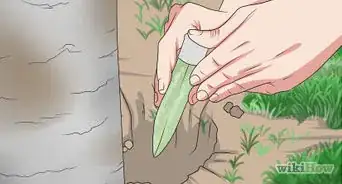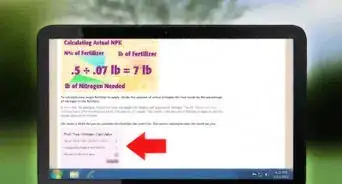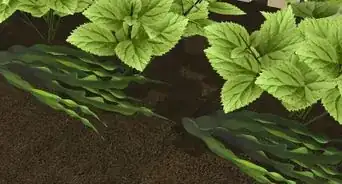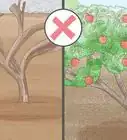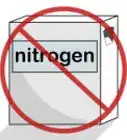This article was co-authored by Maggie Moran and by wikiHow staff writer, Jessica Gibson. Maggie Moran is a Professional Gardener in Pennsylvania.
wikiHow marks an article as reader-approved once it receives enough positive feedback. In this case, 94% of readers who voted found the article helpful, earning it our reader-approved status.
This article has been viewed 273,242 times.
If you'd like to adjust the nitrogen in your soil without relying on commercial fertilizers, use blood meal. This dried blood powder is a slaughterhouse byproduct that's available to by at garden centers or nurseries. Decide if your plants need a nitrogen boost and then mix the blood meal into the soil or dilute it with water. Apply the blood meal at the start of the growing season so your plants will thrive.
Steps
Deciding to Use Blood Meal
-
1Test your soil to see if it needs nitrogen. Buy a simple soil test from your local nursery or garden center and use a sample of soil from your garden or plant container. Follow the test kit instructions to get accurate results. The test will tell you the levels of nitrogen, phosphorus, and potassium.[1]
- For example, the test will tell you if there's a surplus of nitrogen, sufficient levels, a deficiency of nitrogen, or if it's completely depleted.
-
2See if your vegetable leaves are yellow or wilted. Look at your plant leaves for signs of a nitrogen deficiency. The leaves will look yellow or wilted because they don't have enough nitrogen to make chlorophyll. Plants that use a lot of nitrogen and benefit from blood meal include:[2]
- Tomatoes
- Peppers
- Radishes
- Onions
- Squash
- Cruciferous vegetables (broccoli, cabbage, cauliflower, kale, spinach, brussels sprouts)
- Lettuce
- Corn
Advertisement -
3Consider using blood meal as a deterrent for outdoor pests. If rabbits, deer, or small garden pests continue to damage your plants, you can spread a little blood meal directly to the area. Keep in mind that if you sprinkle too much, you'll burn the grass or plants.[3]
- Blood meal will wash away after a strong rain, so you may need to reapply it occasionally.
- While blood meal may keep plant-eating pests away, it can attract meat-eaters, such as dogs, raccoons, or possums.
-
4Buy high-quality blood meal. Purchase USDA approved blood meal from local nurseries, garden centers, or home improvement stores. If you purchase the blood meal online, avoid buying it from countries that have lax laws on meat production because disease can be spread through the blood meal.[4]
- For example, blood meal can't be imported to the U.S. from Europe because of the threat of Mad Cow disease.
- If you can't find high quality blood meal, consider using alfalfa meal or feather meal instead.
Applying and Adjusting Blood Meal
-
1Begin applying blood meal in early spring. Leafy vegetables, flowers, and plants can use a lot of nitrogen when they put on most of their growth. To help plants grow, apply the blood meal in spring. Because the plants will use the nitrogen and it will gradually wash away, reapply the blood meal every 2 months during the growing season.
- Avoid using blood meal year round since overuse can burn the plants or your lawn. Consider switching to a general fertilizer during the rest of the year.
-
2Determine how much blood meal you need for your space. Measure the space where you'd like to adjust the soil. Due to blood meal being so concentrated, you'll only need 1 cup for every 20 square feet of soil.[5]
- For example a small container or window box may only need a few spoonfuls of blood meal while a 100 square feet garden will need 5 cups.
-
3Mix the blood meal with soil or water before spreading it. Read the manufacturer's instructions to determine if you need to mix the blood meal into the top few inches of soil. Some instructions may have you dilute the blood meal with water and pour it on the plant or soil.[6]
- While you can sprinkle a little blood meal on soil to deter animals, always mix or dilute it when adjusting nitrogen levels in your soil.
-
4Avoid using blood meal on seedlings or beans and legumes. Although you can apply blood meal to the soil of many plants and vegetables, don't use it on peas, beans, and other legumes. The roots of legumes have bacteria that add nitrogen back into the soil.[7]
- You should also avoid using blood meal on seedlings.
-
5Lower nitrogen in the soil if you've applied too much blood meal. If you accidentally spread too much blood meal, you'll notice that your plants may be growing large leaves, but aren't flowering. To reduce the nitrogen and help the plant recover from nitrogen burn:[8]
- Remove any dried, discolored leaves from the plant.
- Spread wood mulch around the plant or over the soil.
- Apply bone meal or a phosphorous fertilizer.
- Use water to leach the nitrogen away from the plant or ground.
Expert Q&A
Did you know you can get expert answers for this article?
Unlock expert answers by supporting wikiHow
-
QuestionHow do you use bone meal?
 Maggie MoranMaggie Moran is a Professional Gardener in Pennsylvania.
Maggie MoranMaggie Moran is a Professional Gardener in Pennsylvania.
Home & Garden Specialist
-
QuestionWhich vegetables need bone meal?
 Maggie MoranMaggie Moran is a Professional Gardener in Pennsylvania.
Maggie MoranMaggie Moran is a Professional Gardener in Pennsylvania.
Home & Garden Specialist
-
QuestionIs blood meal good for blueberry plants?
 Maggie MoranMaggie Moran is a Professional Gardener in Pennsylvania.
Maggie MoranMaggie Moran is a Professional Gardener in Pennsylvania.
Home & Garden Specialist
Warnings
- Only use blood meal if you can keep it away from your pets. If dogs and cats eat blood meal, they may experience vomiting, diarrhea, and pancreatitis. Contact the vet immediately if you suspect your pet has eaten blood meal.[9]⧼thumbs_response⧽
Things You'll Need
- Soil testing kit
- Blood meal
- Garden soil
References
- ↑ https://getbusygardening.com/garden-soil-testing/
- ↑ https://plantcaretoday.com/blood-meal-fertilizer.html
- ↑ https://www.epicgardening.com/blood-meal/
- ↑ https://plantcaretoday.com/blood-meal-fertilizer.html
- ↑ https://plantcaretoday.com/blood-meal-fertilizer.html
- ↑ https://plantcaretoday.com/blood-meal-fertilizer.html
- ↑ https://www.growerssolution.com/pdf/Bloo_%20Mea_%20UsageDo's,%20_Don'ts,_and%20Details.pdf
- ↑ https://www.growerssolution.com/pdf/Bloo_%20Mea_%20UsageDo's,%20_Don'ts,_and%20Details.pdf
- ↑ http://www.petpoisonhelpline.com/poison/bone-meal/
About This Article
To use blood meal, start by using a soil testing kit, or checking if your vegetable leaves are yellow or wilted to tell whether your soil needs nitrogen. If you determine that your soil needs nitrogen, buy a high-quality blood meal that’s USDA approved. Next, begin applying the blood meal in early spring and reapply every 2 months during the growing season. In order to figure out how much blood meal you’ll need, measure the space where you’d like to use it, and use 1 cup of blood meal for every 20 square feet of soil. For more tips from our Horticultural reviewer, including when to avoid using blood meal, keep reading!
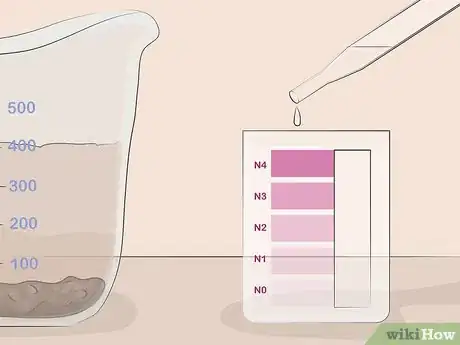

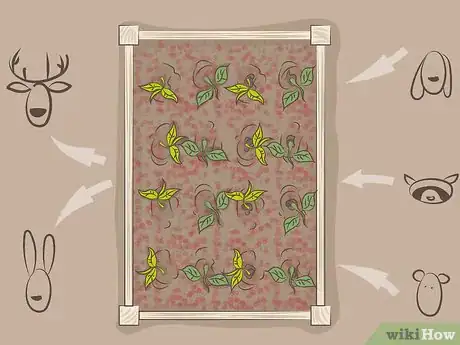
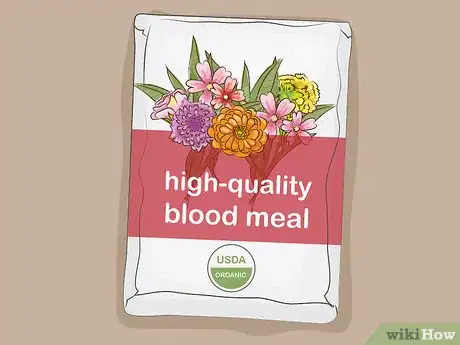
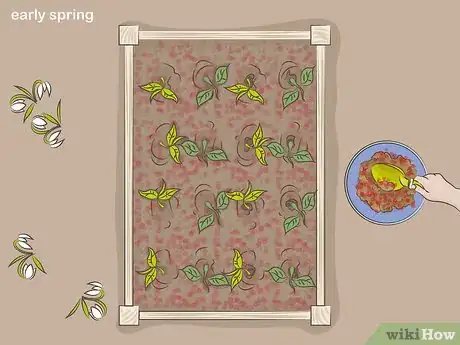
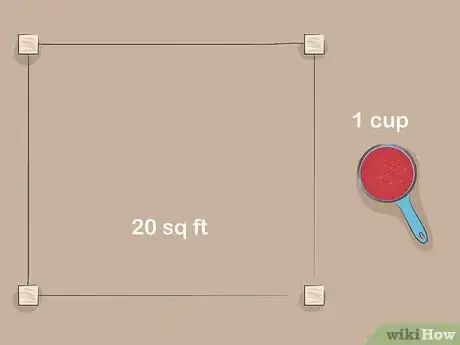
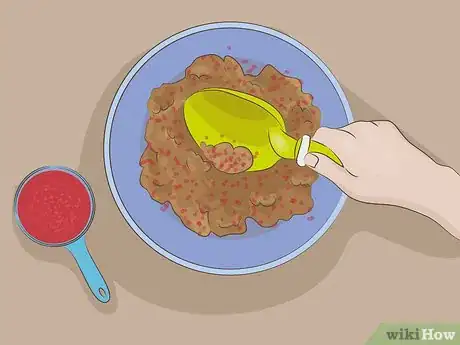
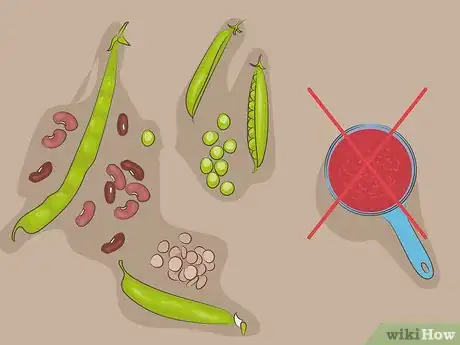
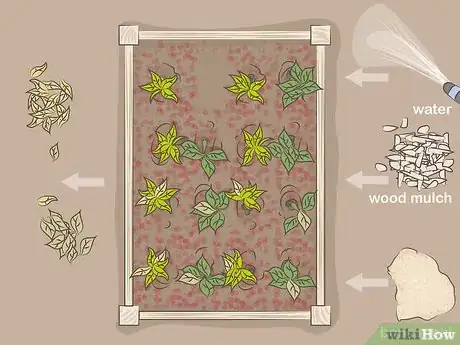
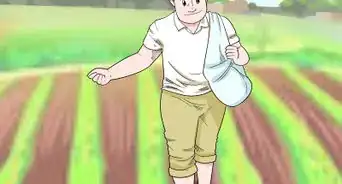

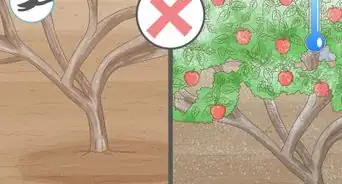
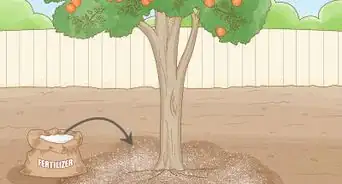


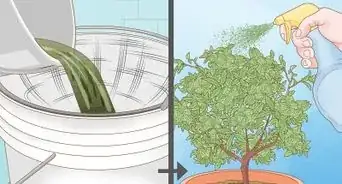
-Step-10-Version-3.webp)
